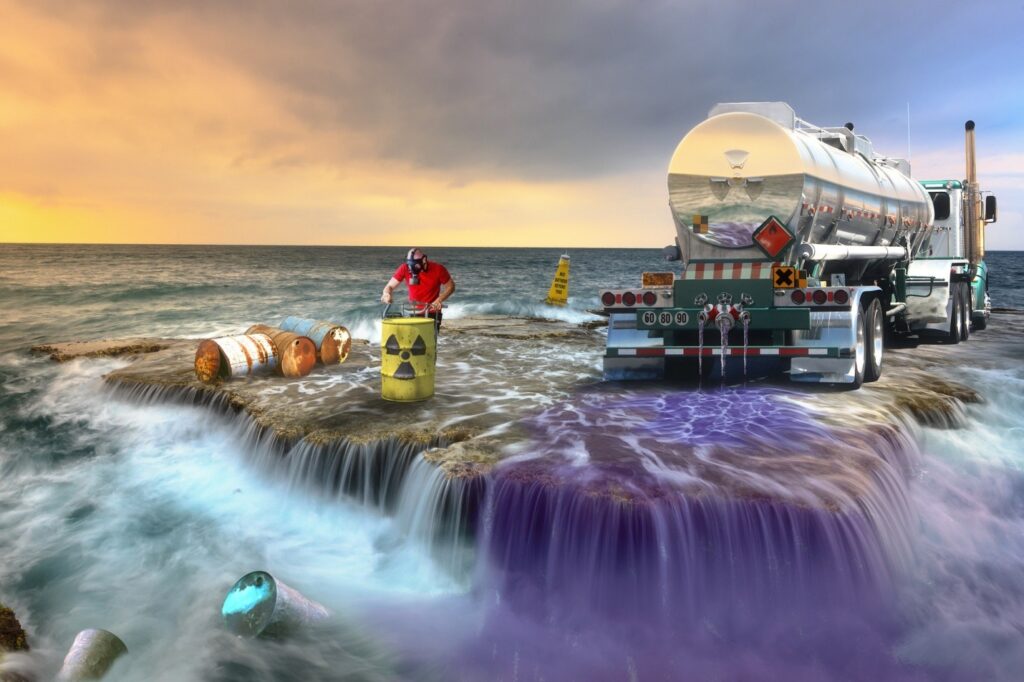All about Reclaim Waste
All about Reclaim Waste
Blog Article
An Unbiased View of Reclaim Waste
Table of ContentsExamine This Report about Reclaim WasteThe smart Trick of Reclaim Waste That Nobody is DiscussingAll About Reclaim WasteThe smart Trick of Reclaim Waste That Nobody is DiscussingThe Basic Principles Of Reclaim Waste
Check out the types, events, and types of fluid waste. Residential sewage waste refers to the waste and items from a residential septic system. This type of waste is developed by people in houses, colleges, and other structures. This only includes sewage-disposal tanks that have a drainpipe field. The correct management and disposal of residential sewer waste need fluid waste to be transferred to a sewer therapy plant where the appropriate approaches and equipment are related to detoxify and dispose of waste.
Commercial waste typically includes prospective risks, such as combustible materials or a blend of fluid and strong waste items, and requires a more advanced and detailed disposal process. The disposal of industrial waste generally entails the filtration of waste before transportation to make sure secure and proper disposal. Industrial waste is produced from results and drainage of industrial processes and production.
This type of waste can not utilize the very same sewage management transportation or procedures as septic or commercial liquids. The hazardous waste monitoring process needs the examination and testing of liquid waste prior to it goes through the disposal process (industrial wastewater treatment). Drainage waste is the liquid waste that originates from overflow and excess stormwater in extremely inhabited locations or cities
Drainage waste can trigger contamination and flooding otherwise managed effectively. Find out more about sewer cleansing and waste monitoring. Making sure correct waste management can protect against calamities and decrease environmental harm. Both people in residential settings and specialists in business or manufacturing sectors can gain from comprehending the procedures and regulations of liquid waste administration.
About Reclaim Waste
Contact PROS Solutions today to learn about our waste monitoring and disposal solutions and the appropriate means to care for the liquid waste you generate.
(https://businesslistingplus.com/profile/reclaimwaste1/)This supposed 'wastewater' is not just a crucial source however, after therapy, will be launched to our land, waterways or the sea. Utilized water from commodes, showers, bathrooms, kitchen sinks, laundries and commercial processes is understood as wastewater.

water used to cool equipment or clean plant and devices). Stormwater, a form of wastewater, is overflow that flows from agricultural and city areas such as roofing systems, parks, yards, roads, courses and gutters into stormwater drains, after rain. Stormwater moves without treatment directly to regional creeks or rivers, eventually reaching the ocean.
Some Of Reclaim Waste
In Queensland, a lot of wastewater is dealt with at sewage treatment plants. Wastewater is carried from residential or industrial sites through a system of drains and pump terminals, recognized as sewerage reticulation, to a sewage treatment plant.
The Division of Natural Resources suggests city governments about managing, operating and keeping sewerage systems and treatment plants. In unsewered locations, city governments might need homeowners to set up individual or household sewage therapy systems to deal with domestic wastewater from bathrooms, kitchen areas, washrooms and washings. The Division of Natural Resources authorizes the use of home systems when they are shown to be effective.
In some brand-new class, therapy of some stormwater to eliminate clutter, sand and gravel has actually begun utilizing gross toxin traps. Wastewater therapy occurs in 4 phases: Eliminates strong issue.
Uses tiny living organisms understands as micro-organisms to damage down and remove staying liquified wastes and great fragments. Micro-organisms and wastes are incorporated in the sludge.
Top Guidelines Of Reclaim Waste
Nutrient removal is not available at all sewer therapy plants since it requires expensive specialized devices. Clear liquid effluent created after treatment may still include disease-causing micro-organisms - liquid waste removal.

The majority of wastewater streams right into the sewerage system. Under the Act, local federal governments provide authorizations and permits for environmentally appropriate activities (Periods) including wastewater releases that could have a neighborhood effect.
The Only Guide for Reclaim Waste
Otherwise, examples are considered laboratory analysis. Usually many tests are required to develop the degrees of each my website of the various toxins such as oils, hefty steels and chemicals in water. Monitoring offers accurate info concerning water top quality and can confirm that licence conditions are being satisfied. The details obtained with surveillance offers the basis for making water top quality choices.
Report this page